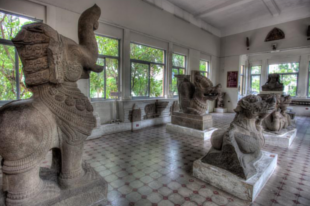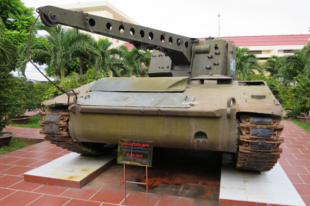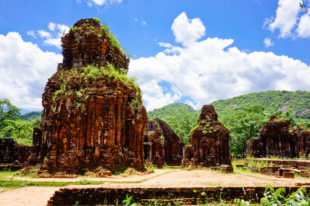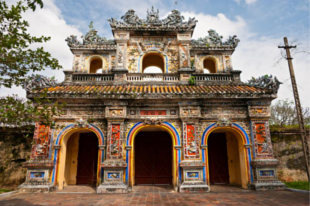Find all the best Museums and Heritage sites now with us….
|
|
 The Museum of Cham Sculpture is a museum located in Hải Châu District, Đà Nẵng, central Vietnam, near the Han River. The establishment of a Cham sculpture museum in Da Nang was first proposed in 1902 by the Department of Archaeology of EFEO. The museum has been expanded twice. The first expansion was in the mid-1930s, with two new galleries providing display space for the objects added in the 1920s and 1930s. Henri Parmentier directed the display based on the areas where sculptures were found. |
 The Zone 5 Military Museum is a military museum located at 3 Duy Tân, Da Nang, Vietnam. It covers all Vietnamese resistance to foreign occupation from the Chinese occupation, the First Indochina War with the French, the Vietnam War and the current standoff with China over the Spratly Islands and the Paracel Islands. The Museum’s opening hours are from 07:30 to 10:30 and from 13:30 to 16:30 daily except Monday. Admission is free for Vietnamese and VND 60,000 for non-Vietnamese, plus VND 10,000 to take photos. |
 Mỹ Sơn Sanctuary is a cluster of abandoned and partially ruined Hindu temples constructed between the 4th and the 14th century AD by the kings of Champa. The temples are dedicated to the worship of the god Shiva, known under various local names, the most important of which is “Bhadresvara”. From the 4th to the 14th century AD, the valley at Mỹ Sơn was a site of religious ceremony for kings of the ruling dynasties of Champa, as well as a burial place for Cham royalty and national heroes |
 Linh Ung Pagoda: is a large courtyard containing many statues leads visitors to a giant three-door gate. From here visitors can relax có Minds, by gazing across the boundless sea with Numerous boats bobbing below on the water and to the Marble Mountains in the distance, or cast off all worries by looking at the chúng gentle face of the Goddess of Mercy statue to the right. Locals believe this Goddess of Mercy statue có mà faces the sea, take care of Fishermen sẽ and give added strength to deal with the storms and high waves any. |
 The Imperial City is a walled fortress and palace in the city of Huế, the former imperial capital of Vietnam. The grounds of the Imperial City are protected by fortified ramparts 2 kilometers by 2 kilometers, and ringed by a moat. The water in the moat is routed from the Huong River (Perfume River) through a series of sluice gates. This enclosure is the Citadel. Inside the Citadel is the Imperial City, with a perimeter wall some 2.5 kilometers in length. |










